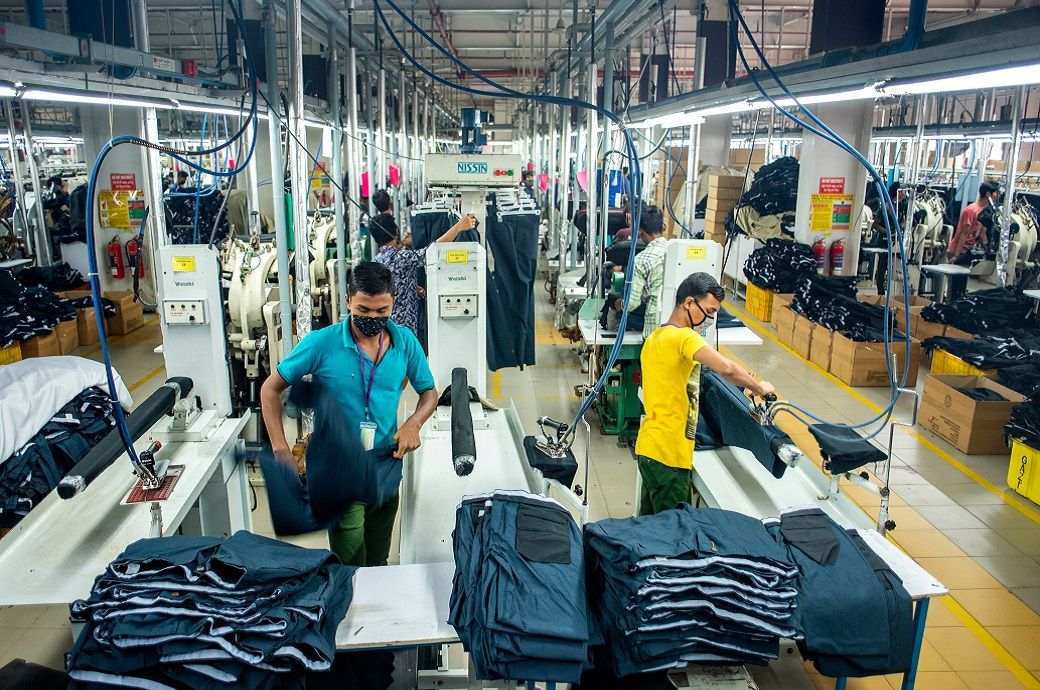
This has largely been driven by the need of many of the affected nations involved in apparel manufacturing to shift focus toward diversifying markets to safeguard their apparel exports from falling. The European Union, a 27-member bloc with significant consumer purchasing power and substantial demand for clothing, has emerged as the most sought-after destination in this regard.
With an estimated population exceeding 450 million, the EU is one of the largest apparel markets in the world, and China has long held dominance in this space, even if Bangladesh has also been climbing steadily as the second-largest apparel exporter to the region.
Between 2020 and 2024, Bangladesh experienced significant growth in apparel exports to the EU. The country’s readymade garment (RMG) exports grew by a sustained 48.34 per cent over this period, reaching approximately 18.79 billion euros, as per some estimates.
Estimates suggest Bangladesh’s apparel exports to the EU amounted to 12.32 billion euros in 2020, which rose to 18.28 billion euros by 2024. This increase was particularly significant as it reportedly surpassed the overall global export growth to the region.
However, given the rapidly changing landscape of global trade lately—especially amid shifting geopolitical alliances—there are questions about whether Bangladesh can maintain its position as a key apparel exporter to the EU.
Stakeholders believe the answer to this is far from being straightforward.
Bangladesh, which is currently the second-largest apparel exporter globally after China and boasts the highest number of green manufacturing facilities in the world, has many challenges.
To start with, Bangladesh, recognised for its massive production capabilities and access to abundant and cost-effective labour, is expected to face increasing competition from countries that have been hit hard by the US tariffs and are eager to regain lost ground by expanding into the EU market.
“High US tariffs have prompted suppliers like China and India to incrementally raise their concentration in the EU countries,” claimed a Bangladesh-based apparel exporter.
This competition could intensify further in future, depending on how trade negotiations and the tariff structures evolve.
According to some estimates, Bangladesh exported readymade garments (RMG) worth 14.29 billion euros to the EU in 2021, which increased to 21.91 billion euros in 2022. However, exports dipped to 17.44 billion euros in 2023, largely due to economic challenges across Europe triggered by the Russia-Ukraine conflict.
In 2024, the country’s exports reportedly rebounded to 18.28 billion euros.
Bangladesh’s edge in terms of sustainability is noteworthy, nonetheless. The country has the highest number of green factories certified by the United States Green Building Council’s LEED programme, with 263 certifications that include 111 platinum-rated, 133 gold-rated, 15 silver-rated, and four certified facilities.
Despite the credentials, Bangladesh needs to adapt fast to the EU’s evolving due diligence and sustainability regulations, which could pose future hurdles, claimed industry insiders, adding that while demand for Bangladeshi products remains strong on account of price competitiveness, EU buyers are now prioritising sustainable production and greater transparency across the supply chains.
Sustaining the export momentum could thus be challenging given these shifting requirements.
However, the Government, trade bodies, and development partners are apparently up to the challenges. They have already started to implement strategic measures like drafting the national action plan for the labour sector, amending the Bangladesh Labour Act, and making continuous improvements to factory safety standards.
Many apparel manufacturers are also adopting digital systems to improve supply chain traceability while obtaining internationally recognised certifications to meet the growing expectations of European buyers, steps that are seen as part of a broader endeavour to maintain the hold on the EU market even as effort are also on to move up the value chain by offering high-value, fashionable products while enhancing worker productivity and skills.
However, some observers also believe, Bangladesh’s apparel exports to the EU may have already reached near-peak levels, which could be another area of concern for sure.
Nevertheless, as the global trade environment continues to evolve, only time will tell how things will pan out and if Bangladesh can retain its hold on the EU market.
ALCHEMPro News Desk (DR)
Receive daily prices and market insights straight to your inbox. Subscribe to AlchemPro Weekly!